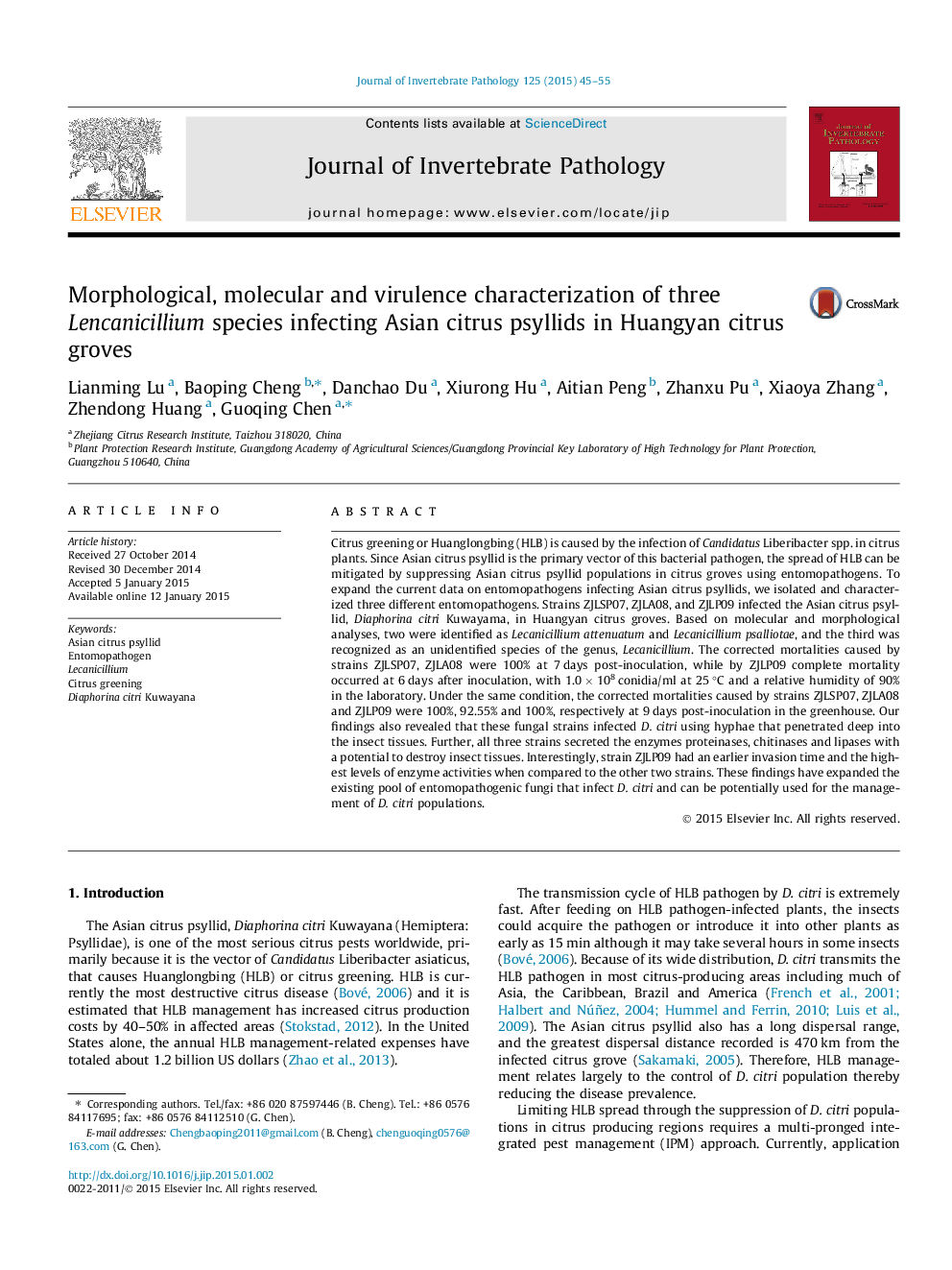| کد مقاله | کد نشریه | سال انتشار | مقاله انگلیسی | نسخه تمام متن |
|---|---|---|---|---|
| 4557676 | 1628227 | 2015 | 11 صفحه PDF | دانلود رایگان |

• Three different entomopathogens that kill the Asian citrus psyllid were isolated.
• They were Lecanicillium attenuatum, L. psalliotae and a new Lecanicillium species.
• ZJLP09 had the strongest virulence among these strains at early infection stage.
• The infection process of the three pathogens against D. citri was examined.
• These strains secreted the enzymes proteinases, chitinases and lipases.
Citrus greening or Huanglongbing (HLB) is caused by the infection of Candidatus Liberibacter spp. in citrus plants. Since Asian citrus psyllid is the primary vector of this bacterial pathogen, the spread of HLB can be mitigated by suppressing Asian citrus psyllid populations in citrus groves using entomopathogens. To expand the current data on entomopathogens infecting Asian citrus psyllids, we isolated and characterized three different entomopathogens. Strains ZJLSP07, ZJLA08, and ZJLP09 infected the Asian citrus psyllid, Diaphorina citri Kuwayama, in Huangyan citrus groves. Based on molecular and morphological analyses, two were identified as Lecanicillium attenuatum and Lecanicillium psalliotae, and the third was recognized as an unidentified species of the genus, Lecanicillium. The corrected mortalities caused by strains ZJLSP07, ZJLA08 were 100% at 7 days post-inoculation, while by ZJLP09 complete mortality occurred at 6 days after inoculation, with 1.0 × 108 conidia/ml at 25 °C and a relative humidity of 90% in the laboratory. Under the same condition, the corrected mortalities caused by strains ZJLSP07, ZJLA08 and ZJLP09 were 100%, 92.55% and 100%, respectively at 9 days post-inoculation in the greenhouse. Our findings also revealed that these fungal strains infected D. citri using hyphae that penetrated deep into the insect tissues. Further, all three strains secreted the enzymes proteinases, chitinases and lipases with a potential to destroy insect tissues. Interestingly, strain ZJLP09 had an earlier invasion time and the highest levels of enzyme activities when compared to the other two strains. These findings have expanded the existing pool of entomopathogenic fungi that infect D. citri and can be potentially used for the management of D. citri populations.
Photographs of D. citri infected by strain ZJLP09 observed under a dissecting microscope. (A) Healthy D. citri. (B–F) the infected D. citri at 24 h, 36 h, 48 h, 72 h and 96 h post-inoculation accordingly. Strains ZJLSP07 and ZJLA08 induced similar symptoms.Figure optionsDownload as PowerPoint slide
Journal: Journal of Invertebrate Pathology - Volume 125, February 2015, Pages 45–55